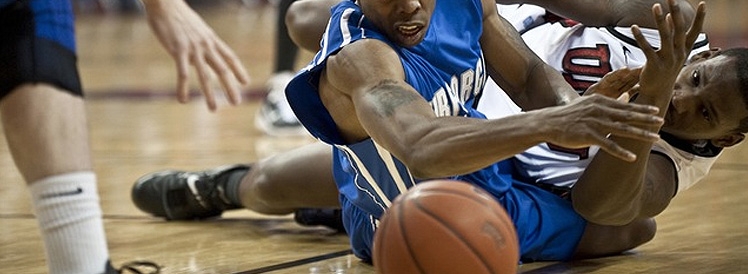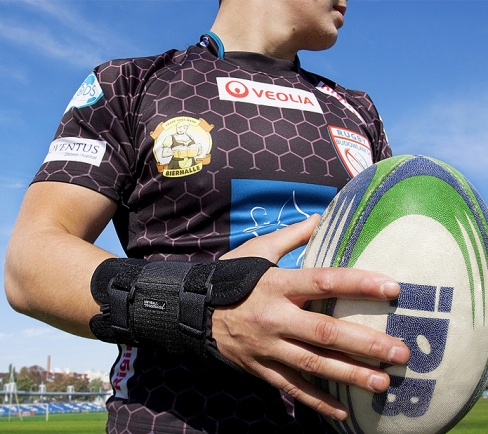Basketball is a dynamic sport and it is not uncommon to witness accidents and injuries on the court. Basketball viewers realise what risks the players face. The most common injuries concern both the legs and arms.
A minor and frequent injury is a finger dislocation. A momentary loss of concentration and inadequate finger position is enough to cause an accident. The injury is easy to eliminate by reduction, but the player will not be able to play for the next few days. The injury might be prevented by the application of e.g. a plaster with no gauze. Much more serious is the injury of the shoulder. The injury is usually caused by direct application of force, e.g. when the player is pulled in defence or hit on the shoulder when throwing the ball. If the hand is extended, the shoulder and arm joints are exposed and face a risk of injury. For this kind of injuries, players will need specialist’s help. A physician will reduce the shoulder and put it in a shoulder stabiliser. Further treatment involves a few weeks of rehabilitation.
The most injury-prone joint in basketball players is the ankle joint. The injuries that may occur within the ankle include sprain, simple dislocation or tear or rupture of joint capsule. These usually happen when the player is landing or moving with great speed and force in the defence. The injury is painful and may exclude the player from court for as long as several weeks. One of the precautions players can take is to wear shoes with a higher upper that will stabilise the ankle or use special protective stabilisers or orthoses. Another joint exposed to a risk of injury is the knee. In this case the injury usually occurs within the meniscus or the ligaments. One of the most serious knee injuries is the rupture of cruciate ligament that may exclude the player from court for a very long time and requires laborious rehabilitation. If the player feels pain or rigidity in the knee, it is advisable to apply a cold compress (cold compression therapy) and use a knee brace. A well-fitted orthosis will eliminate ligament overload and limit non-physiological movement in the joint, i.e. genu recurvatum, that may lead to serious damage.
The injury is likely to happen at the most unexpected moment, which is why it is so important to secure the joint against potential injuries and remain careful at the time of the match and trainings.
















